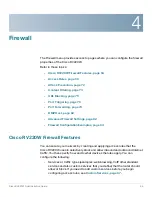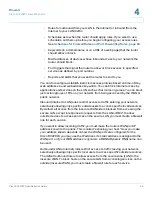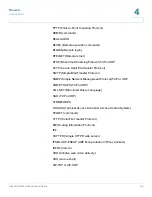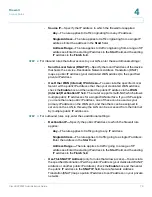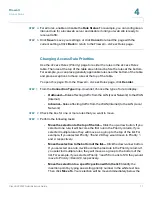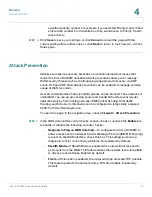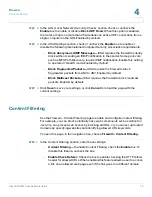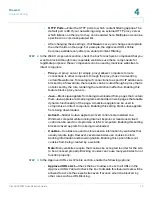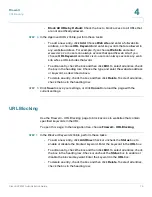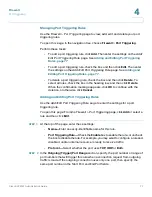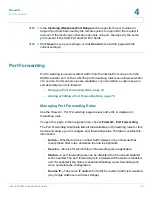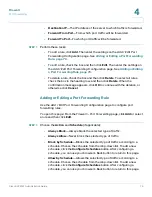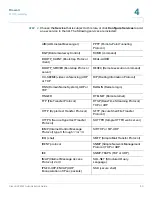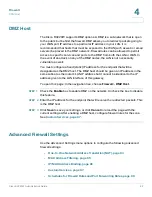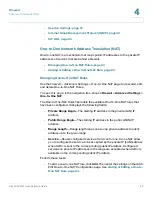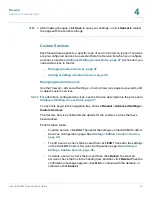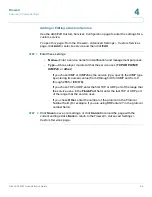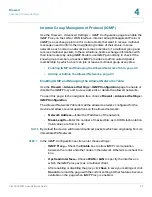
Firewall
Port Forwarding
Cisco RV220W Administration Guide
78
4
STEP 3
In the
Incoming (Response) Port Range
section, specify the port number or
range of port numbers used by the remote system to respond to the request it
receives. If the incoming connection uses only one port, then specify the same
port number in the Start Port and End Port fields.
STEP 4
Click
Save
to save your settings, or click
Cancel
to reload the page with the
current settings.
Port Forwarding
Port forwarding is used to redirect traffic from the Internet from one port on the
WAN to another port on the LAN. The port forwarding rules menu allows selection
of a service. Common services are available or you can define a custom service
and associated ports to forward.
•
Managing Port Forwarding Rules, page 78
•
Adding or Editing a Port Forwarding Rule, page 79
Managing Port Forwarding Rules
Use the
Firewall > Port Forwarding
page to view, add, edit, or delete port
forwarding rules.
To open this page:
In the navigation tree, choose
Firewall
>
Port Forwarding
.
The Port Forwarding Rule Table lists all the available port forwarding rules for this
device and allows you to configure port forwarding rules. The table contains this
information:
•
Action
—Whether to block or allow traffic (always or by schedule) that
meets these filter rules, and when the rule is applicable.
•
Service
—Service for which this port forwarding rule is applicable.
•
Status
—A port forwarding rule can be disabled if not in use and enabled
when needed. The port forwarding rule is disabled if the status is disabled
and it is enabled if the status is enabled. Disabling a port forwarding rule
does not delete the configuration.
•
Source IP
—The source IP address for traffic from which traffic is forwarded
(Any, Single Address or Address Range).

